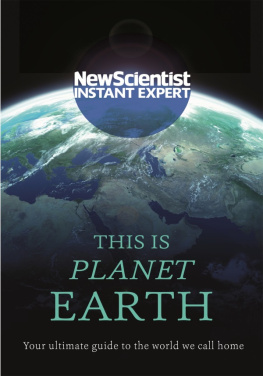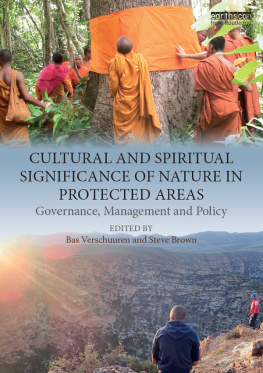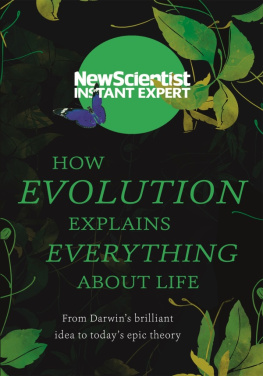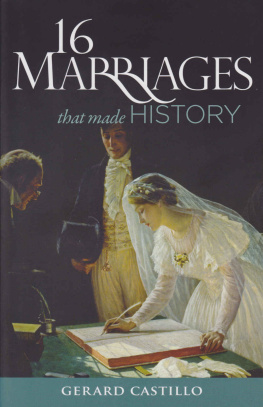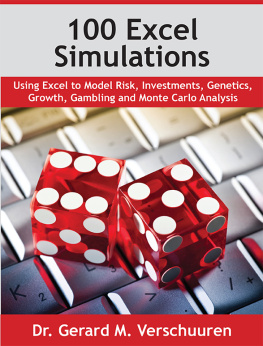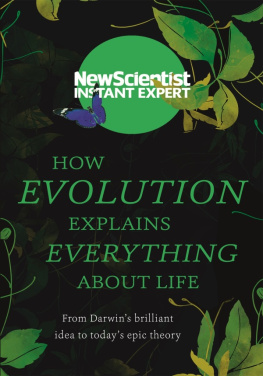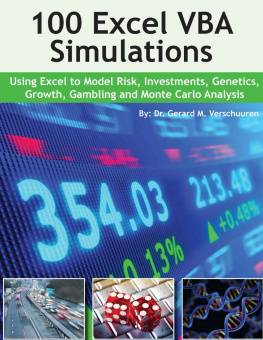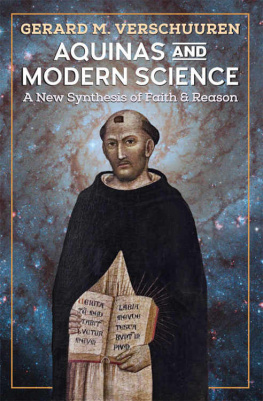Dr. Gerard Verschuuren - In the Beginning: A Catholic Scientist Explains How God Made Earth Our Home
Here you can read online Dr. Gerard Verschuuren - In the Beginning: A Catholic Scientist Explains How God Made Earth Our Home full text of the book (entire story) in english for free. Download pdf and epub, get meaning, cover and reviews about this ebook. year: 2019, publisher: Sophia Institute Press, genre: Religion. Description of the work, (preface) as well as reviews are available. Best literature library LitArk.com created for fans of good reading and offers a wide selection of genres:
Romance novel
Science fiction
Adventure
Detective
Science
History
Home and family
Prose
Art
Politics
Computer
Non-fiction
Religion
Business
Children
Humor
Choose a favorite category and find really read worthwhile books. Enjoy immersion in the world of imagination, feel the emotions of the characters or learn something new for yourself, make an fascinating discovery.

- Book:In the Beginning: A Catholic Scientist Explains How God Made Earth Our Home
- Author:
- Publisher:Sophia Institute Press
- Genre:
- Year:2019
- Rating:5 / 5
- Favourites:Add to favourites
- Your mark:
- 100
- 1
- 2
- 3
- 4
- 5
In the Beginning: A Catholic Scientist Explains How God Made Earth Our Home: summary, description and annotation
We offer to read an annotation, description, summary or preface (depends on what the author of the book "In the Beginning: A Catholic Scientist Explains How God Made Earth Our Home" wrote himself). If you haven't found the necessary information about the book — write in the comments, we will try to find it.
In the Beginning: A Catholic Scientist Explains How God Made Earth Our Home — read online for free the complete book (whole text) full work
Below is the text of the book, divided by pages. System saving the place of the last page read, allows you to conveniently read the book "In the Beginning: A Catholic Scientist Explains How God Made Earth Our Home" online for free, without having to search again every time where you left off. Put a bookmark, and you can go to the page where you finished reading at any time.
Font size:
Interval:
Bookmark:
Also by Gerard M. Verschuuren
from Sophia Institute Press:
Forty Anti-Catholic Lies
A Mythbusting Apologist Sets the Record Straight
Dr. Gerard M. Verschuuren
In the Beginning
A Catholic Scientist Explains
How God Made Earth Our Home
SOPHIA INSTITUTE PRESS
Manchester, New Hampshire
Copyright 2019 by Gerard M. Verschuuren
Printed in the United States of America. All rights reserved.
Cover design by Perceptions Design Studio.
Cover image (nasa-89125) Unsplash.
Unless otherwise noted, Scripture quotations in this work are taken from the New American Bible, revised edition 2010, 1991, 1986, 1970 Confraternity of Christian Doctrine, Washington, D.C., and are used by permission of the copyright owner. All Rights Reserved. No part of the New American Bible may be reproduced in any form without permission in writing from the copyright owner. Quotations marked RSVCE are taken from the Revised Standard Version of the Bible: Catholic Edition , copyright 1965, 1966 the Division of Christian Education of the National Council of the Churches of Christ in the United States of America. Used by permission. All rights reserved.
Excerpts from the English translation of the Catechism of the Catholic Church, second edition, 1994, 1997, 2000 by Libreria Editrice VaticanaUnited States Conference of Catholic Bishops, Washington, D.C. All rights reserved.
Quotations from English translations of papal encyclicals are from the Vatican website (http://w2.vatican.va/content/vatican/en.html) Libreria Editrice Vaticana. All rights reserved. Used with permission.
No part of this book may be reproduced, stored in a retrieval system, or transmitted in any form, or by any means, electronic, mechanical, photocopying, or otherwise, without the prior written permission of the publisher, except by a reviewer, who may quote brief passages in a review.
Sophia Institute Press
Box 5284, Manchester, NH 03108
1-800-888-9344
www.SophiaInstitute.com
Sophia Institute Press is a registered trademark of Sophia Institute.
ePub ISBN 978-1-622826-735
To Stephen M . Barr,
an unwavering defender
of modern science
and ancient faith
Contents
Part 1
Part 2
Appendix:
Introduction
When, on July 20, 1969, a spacecraft landed on a rocky basalt crater of the moon, one of its two astronauts would recall, It suddenly struck me that that tiny pea, pretty and blue, was the Earth. I put up my thumb and shut one eye, and my thumb blotted out the planet. It is this tiny pea in a vast universe that we call our home.
How did the earth become our home? It certainly didnt happen overnight. We all know that Rome was not built in a day. Well, neither was the earth, a tiny speck in an immense universe. It took billions of years to get our home set up in the proper way so we could enter and comfortably live here. Some see this as the outcome of a protracted sequence of coincidences. Others think this process had to be the way it was, because it was intended to be that way. Who is right?
Indeed, on the surface, it seems to be a lengthy process of trial and error with numerous steps of a seemingly hit-or-miss character. Yet the entire process was much more streamlined than it appears. How could that be? In this book, we will discover that there was, and still is, quite an unmistakable pattern that has been steering the entire process. There is reason to believe this pattern came from God, so the entire process was and is under Gods control. Thats how God made a home for us in this immense universe.
This book is not written for specialists. Its subject requires some scientific terminology and some basic explanations of scientific issues, and I added notes so that you can check certain claims I make, but I wanted to keep the text as readable as possible for the average person. I hope I succeeded.
Part 1
Before We Get Started
When you want to delve into the history of the universe, of the earth, and of life on it, you will soon discover there is quite some disagreement about the factual data. First, there is disagreement about the time scales of the events involved, ranging from very short to very long. Second, there is not a commonly accepted standard for determining when those events occurred. Those two issues need to be settled before the real discussion can begin.
The Timescales
The Book of Scripture
A few centuries ago, James Ussher If Ussher could be that exact, many think, then his calculation must have been very reliable and accurate.
What Ussher didnt realize, however, is that the Book of Scripture is not a history book or a science book. Its not a book about the history of the universe and the history of the earth. It does not tell us how old the universe is or how old the earth is. Ussher made the same mistake that many fundamentalist Protestants make: he read Scripture as if it were a science textbook.
In contrast, the Catholic Church has made, for many centuries, an important distinction between what she calls the Book of Scripture and the Book of Nature. In making this distinction, the Church follows a long tradition. This distinction can be traced back at least to St. Augustine,
The Catholic Church acknowledges that God speaks to us in two ways: through the Book of Scripture and through the Book of Nature and He is the source of both. Galileo
Thats why there can be a big difference between what the Book of Scripture tells us and what the Book of Nature tells us. To use the metaphor Cardinal Baronius Put differently, the Book of Nature tells us how we are rooted in nature, whereas the Book of Scripture deals with how we are rooted in God.
In spite of this important, long-standing difference, James Ussher read the Book of Scripture as if it were the Book of Nature. He did n Thats why scientists even if they are not Christian can tell us much about the age of the universe and the age of the earth.
The Book of Scripture, on the other hand, has an entirely different approach. The creation account in the book of Genesis , chapter 1, is not about an event that happened long ago. Neither is it an event that lasted six days not even if we take each of those six days as a much longer period of time. Its hard, if not impossible, to read Genesis 1 as a chronological account that treats Gods creation as if it were a six-day event.
Creation cannot follow a timeline, for time itself is something God had to create first. Creation creates chronology, but it cannot become part of chronology, nor can chronology be the framework of creation. Considerations like these are troublesome for a chronological interpretation of Genesis 1.
There are other indications that tell us that we are not dealing with a chronological order: the creation of the sun happens three days after the day-night cycle is established. In addition, plants need sun, but they were created one day before the sun was created. Perhaps these are minor problems, but they cannot be ignored.
So, we can draw the provisional conclusion that Genesis 1 is not meant to be understood as a literal chronological account. As Pope Pius XII
This leads to the second possibility that Genesis 1 is to be given not a chronological, but a structural reading. The Catechism of the Catholic Church ( CCC ) explains that Scripture presents the work of the Creator symbolically as a succession of six days of divine work, concluded by the rest of the seventh day (Gen. 1:12:4) (337).
The structural approach is not a new, modern idea. For many centuries, it has been recognized that the six days of creation are divided into two sets of three. In the first set, God separates one thing from another: On day one, He separates the light from the darkness (thus giving rise to day and night); on day two, He separates the waters above from the waters below (thus giving rise to the sky and the sea); and on day three, He separates the waters below from each other (thus giving rise to dry land in between the waters). Classically, this section is known as describing the work of division .
Next pageFont size:
Interval:
Bookmark:
Similar books «In the Beginning: A Catholic Scientist Explains How God Made Earth Our Home»
Look at similar books to In the Beginning: A Catholic Scientist Explains How God Made Earth Our Home. We have selected literature similar in name and meaning in the hope of providing readers with more options to find new, interesting, not yet read works.
Discussion, reviews of the book In the Beginning: A Catholic Scientist Explains How God Made Earth Our Home and just readers' own opinions. Leave your comments, write what you think about the work, its meaning or the main characters. Specify what exactly you liked and what you didn't like, and why you think so.

